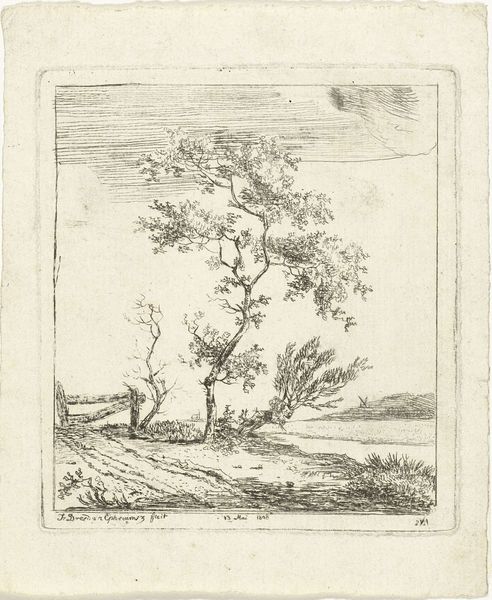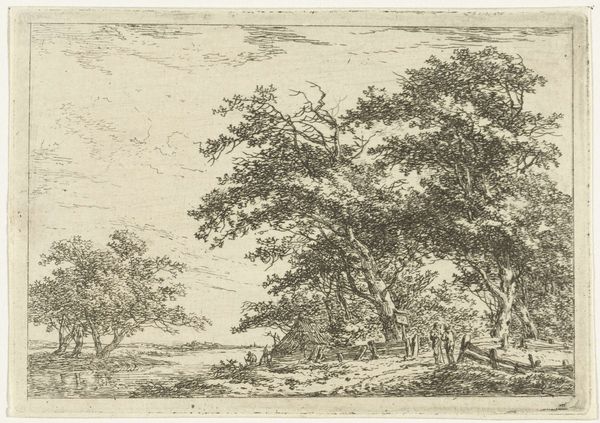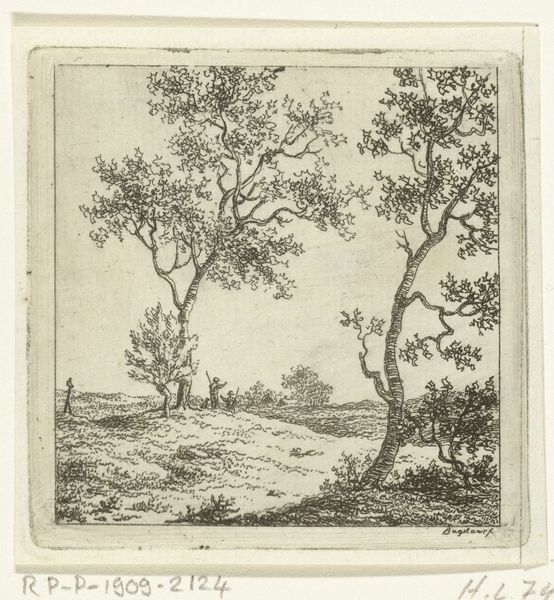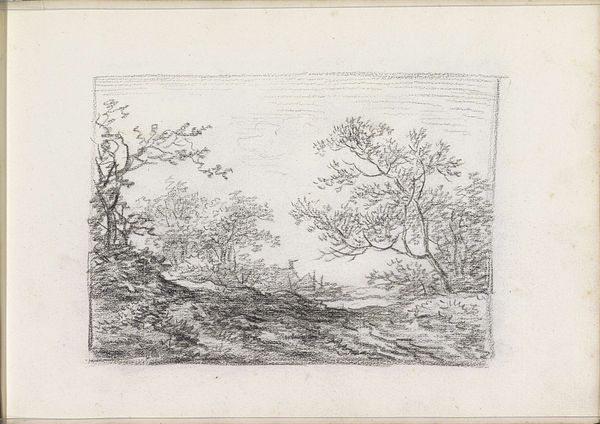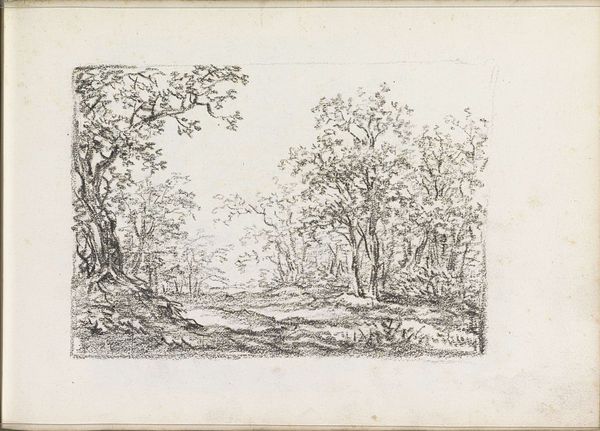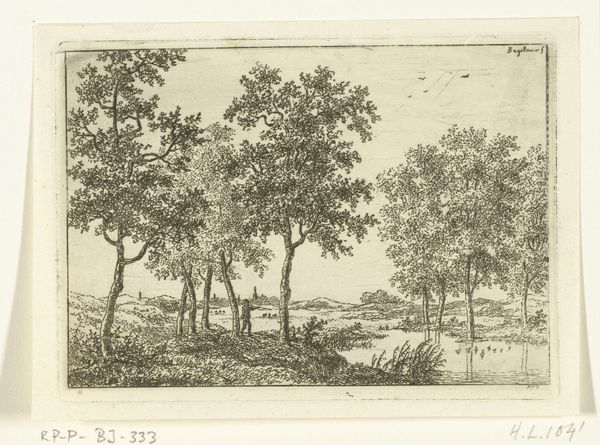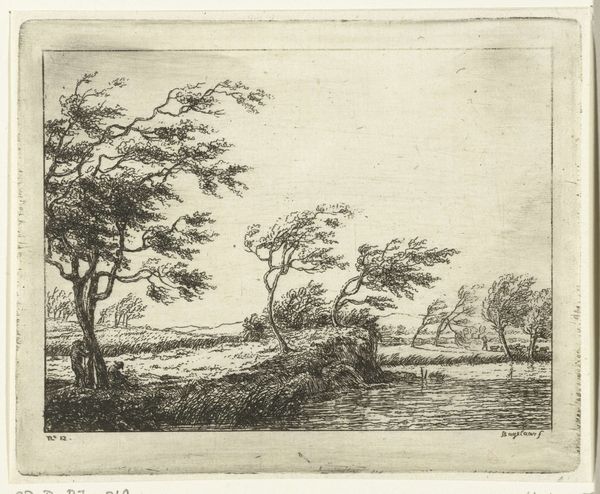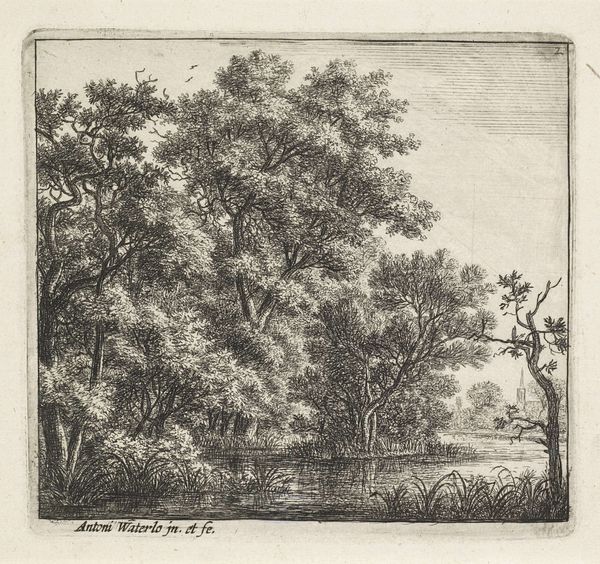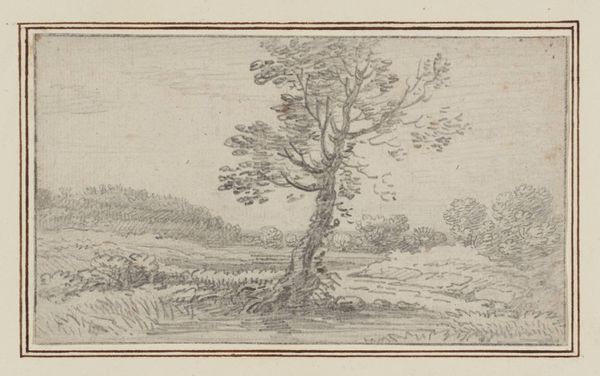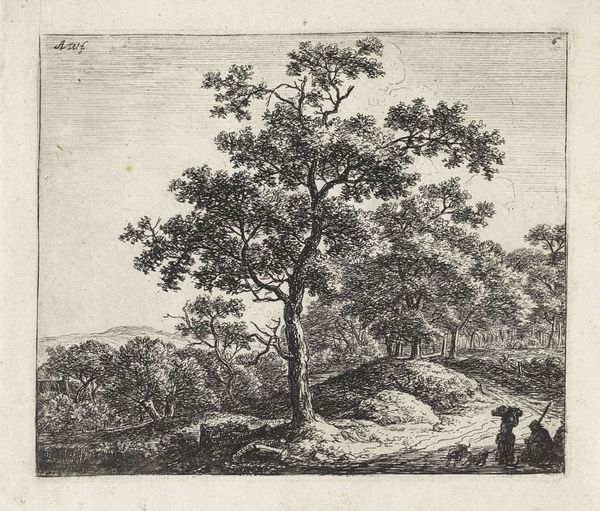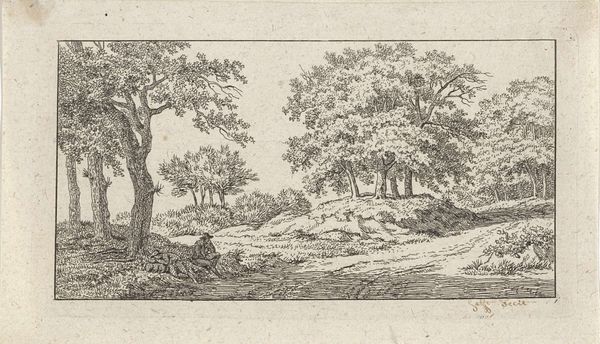
print, etching
# print
#
pen sketch
#
etching
#
landscape
#
line
#
realism
Dimensions: height 45 mm, width 51 mm
Copyright: Rijks Museum: Open Domain
Editor: Here we have Ernst Willem Jan Bagelaar's "Rivierlandschap met bomen", or "Riverscape with Trees," made sometime between 1798 and 1837. It’s an etching, so small and delicate. I’m struck by how much detail he fits into such a compact composition; what do you see when you look at it? Curator: Formally, the organization is quite sophisticated. Notice how the dominant tree on the left acts as a visual anchor. Its twisting form leads the eye across the landscape and the use of line, almost calligraphic in places, defines the spatial recession. How do you interpret the use of line here? Editor: Well, the lines in the foreground are dense, giving the impression of detailed texture. As the eye moves back, they become sparse, suggesting distance. The etching seems to almost be defined by light and shadow; that line work must serve to do both? Curator: Precisely. Bagelaar is using line weight and density to create tonal variation, suggesting both light and depth. The economy of means is also quite striking. With relatively few lines, he evokes a palpable sense of space and atmosphere, almost like a Zen painting! Do you observe the same formal qualities? Editor: Yes, and that limitation almost emphasizes the contrast! Is it common to see line work function so actively in works of this era? Curator: The effectiveness of this etching is largely due to the inherent properties of line. However, Bagelaar seems exceptionally aware of line, using it to build texture, define space, and capture an elusive atmosphere. Do you now understand the significance of focusing on lines? Editor: Yes! Thinking about the mark-making makes me appreciate the detail within. Thanks!
Comments
No comments
Be the first to comment and join the conversation on the ultimate creative platform.
